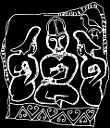
Transoxiana 14
Agosto 2009
Index 14
ISSN 1666-7050


|
Transoxiana 14  |
Tongwancheng is a significant building heritage of the Southern Huns. It is the only one city in Inner Asia, that built by Huns. However another monument as Hai Ba Ta or a great pagoda in Yinchuan city is also connected to the Huns. Helian Bobo, founder of Da Xia Kingdom, constructed a new capital in the heart of Ordos region from 413. Because of its strategic position, the city became commercial and military centre in the Inner Asian area: that was a great stop along the Silk Road. The city was inhabited until the Ming dynasty.
In 2004 National Geographic Online Hungary has published an article on the capital of the Southern Huns, Tongwancheng. Previously, we did nott any detailed information about this city, as it was hardly mentioned in international historical literature. Only few monographs recorded the name of the city. In the past few decades only a handful sinologists – Eberhard, Pulleyblank and Boodberg- have dealt with the History of Southern Huns, all without data concerning this significant city, despite of mentioning it in Chinese Chronicles as Jin shu, Wei shu, etc.1
Various names have been given to the city through different historical periods, it has been known as Tongwancheng, and later as Xia Zhou. Some scholars didn’t accept that the Huns had survived and lived what is present-day Northern and Central China for centuries, but the Chinese and some Orientalists proved this with archaeological findings and historical sources. According to Professor Hou Yongjian, Xi’an Normal University, the Huns lived in these regions until the 7th or 8th centuries. Chinese archaeological excavations in outer or northern China unearthed large tombs that contained significant quantities of objects (saddles, horse furniture, potteries, etc.) associated with the Southern Huns. The territory of these people stretched over much of the land surrounding the Yellow-river, and Eastern-Gansu and Qinghai.2
When the Southern Huns became the vassals of Han-dynasty, they established many cities and capitals in what is now present-day Northern-China. After their separation at the end of the 1st century AD, and Hun nobles established independent states with own centre or “ordu"3. Only in the end of 3rd century did they become united again, under the rule of Liu Yuan. From this time onward, in the areas around the Yellow-river, only a few Hun dynasties such as the Han, Zhao, Da Xia and Northern-Liang are recorded, known to us today by their Chinese appellations. Previously, scientists thought they were Chinese dynasties, but later research into historical sources revealed that they were indeed Huns.
Among these various dynasties the Da Xia, which ruled from 407 to 431., is especially significant. This empire spread out over a vast territory around the Yellow-river, and its capital was for some time Gao Ping, which is known today as Guyuan city in the province of Ningxia. Helian Bobo, the founder of this last great Hun dynasty lived on the right bank of Yellow river, where he built a 9 storey pagoda.4 It can be seen in present day Yinchuan, and this is the oldest Buddhist pagoda in China, can still be see seen in present-day Yinchuan. Indeed Helian Bobo planned and constructed many significant building sites, Tongwan city in the heart of the Ordos region, represent his most striking contribution. According to Chinese scholars’ studies the highest rate of population was from 82.000 up to 107.000.5
The great Hun city, Tongwancheng was recorded in, Chapter 130 of the Chinese chronicle, Jin shu, and it was inhabited until the Ming-dynasty. After 1423 the city disappeared from written sources until Chinese and foreign travellers re-discovered it during the 19th century. At first Chinese scholars working with their own sources, believed that the city was the capital of Tanguts, but later they realised that it was established by the Southern Hun Da Xia dynasty.6 The real scientific research began only in the 1990s, the site was surveyed twice and scholars from Shaanxi province undertook a great project that sought to investigate the history and culture of the Southern Huns, with extensive archaeological research.
The professionals found some ruins of towers outside the city walls, it is believed that the function of these structures was to help protect the king when he was outside the wall. They localised sites of tombs of near these ruined towers, but these remain unexcavated. The most important findings were of the seals of Southern Hun kings and /or officials, that were unearthed near Tongwancheng, in Yulin, and other locations in the Ordos regions and Shaanxi province. One was discovered in Loyang, which was at one time the part of the Southern Hun Empire.7 These items are significant because they show that while the Southern Huns used Chinese signs, the language of seals was Hun. Uchiraltu, Inner Mongolian expert read the inscriptions and reconstructed some Hun administrative titles, that were recorded in the Chinese chronicles as well.
In researching Tongwancheng, the biggest problem that presents itself is that the Chinese archaeologists have so far only done surveys and no excavations have been carried out.
They believe that one part under the eastern city wall or fortress had previously been erected , but was later ruined entirely.8 So, it might be true that previously wall or fortress was erected, but it was ruined entirely. Other scholars propose that the surroundings were inhabited by Huns, but there was no city there before the 5th century. That proposal proved the Chinese chronicles, which have detailed building procedure from there. According to the Jin shu, Helian (Liu) Bobo (407-425), a direct descendant of great Mao tun and Liu Yuan shanyu, and the founder of the Hun Da Xia dynasty, planned and built an enormous capital between 413-419.9
Archaeologists collected some objects from locals, but they couldn’t determinate the exact date of their production. The most interesting object discovered was a bowl with seeds. A sculpture of a horse was also found inside the city, presently this object can be seen in the Xi’an Steles of Forest Museum. Supplementing these objects, many varieties of coins were discovered in the city, illustrating the importance of the city throughout the Middle Ages. We got to know from Zhou that the well-known Nestorian crosses of Ordos were found by locals in the first half of the 20th century.10
Our own discoveries of huge broken ceramics, decorations from the interiors of buildings indicate that the city was occupied and laid to waste in some historical periods. We know of two major sieges: in 786 by Tibetan troops, and in 1206 Jurchen troops invaded the city.
There is another problem that presents itself to interested archaeologists: according to Jin shu, when the construction of the capital was complete, Helian Bobo erected a stele upon which he listed his deeds. Researchers were hoping to find this object in the southern part of the city, where the chronicle situates item but at the time of the survey they did not find it. All that they found was a robbed tomb from Tang-period with another stele connected to it. So the matter of Helian Bobo’s stele remains unsolved to this very day. 11
According to cartographical data, Tongwan city is situated in Shaanxi province, Jinbian country at the central point of Ordos plateau. It had been a strategic and commercial centre for centuries. Historical sources speak of two rivers – Hong Liu and Wu-ding -that flew through this area, nowadays however only the latter remained. In the ancient times it could be a fertile land as Helian Bobo said:"The hill is beautiful, in front of it the plain is wide, and around this there is a lake of pure water. I wandered so many places, but I haven’t seen a country, whose beauty can compare with that of this place".12 Inside the city there had been a big lake, but at some point it had dried up. The city was immense, with outer walls that were 6 km long, 16-30 meters wide, and with watchtowers constructed on each of the four corners.
Sand, soil and water were mixed, yielding a strong building material, which is known as “white earth"Probably, inside the city wood was another important building material. We can observe traces of beams on the sides of the palace and some watchtowers. The investigations of the Chinese archaeologists revealed that the city had been divided into two main partan outer segment and an inner one. Additionally the inner city was further subdivided into western and eastern sections. The western segment contains remnants of a palace, the houses of officers and other leaders, and various governmental offices. South of the palace two ruined towers can be found, one of which was a drum tower, and other a bell tower. Together these towers performed a very important function: providing information to the habitants.
The Chang’an Tower stood in the centre of the western section, guarding the road to Chang’an, the ancient Chinese capital, that was once part of the Da Xia Kingdom. The eastern part was the industrial and commercial centre and some houses remain in good condition. In some ways, these houses differed from the houses of nobles. While a noble house have had two or more rooms, and the “garden" in front of it, the house of an ordinary family would have had only two rooms and usually no “garden".
Considering the more ten-thousand inhabitants of the city there are only few houses remained. so, it is likely that “temporary" houses such as tents (yurts) or wooden houses existed inside and outside the city. However, the arrangement of the houses were much the same: like the yurts of the nomadic people who moved mainly through Mongolia and Tibet, as Hou stated,13 and the typologies that developed in early cities in Mongolia, the central point of these houses was the fireplaces. The smoke was lead through an aperture in the ceiling, providing a secure and liveable home for the inhabitants.
It is very important to emphasize that Tongwancheng was not only Hun city in Inner Asia. Tongwancheng was a city that was built late in the history of the Southern Huns and has remained in relatively good condition, but there are also traces of other cities. Mongolian archaeologists contend that among Inner Asian nomadic people thgere were certain tendencies towards urban living, and that their way of life was not as simple as has often been reported.
According to new archaeological surveys, other cities have been connected to the Hun period (2nd BC – 1st AD), and in Mongolia, traces of encampments dating back to the Bronze and Iron Age were discovered. Working throughout in Mongolia, archaeologists excavated four major cities (Terelj, Gua Dob, Bayanbulag and Boroo) supplementing the 10 Hun cities that were identified by H. Perlee in the 1950s.14 Next to Lake Baikal, we know of two significant commercial and industrial cities (Ivolga and Derestui). Chinese scientists have identified the site of at least 500 city ruins in Inner Mongolia dating from different periods, but we must wait for the excavation of these sites before we can know whether Hun cities will be among them.
Chinese scholars state that the ancient centre of Huns was in the Yin-shan and Ordos plateau. As we know, the Ordos region was once an important industrial centre, that’s why pastoral tribes settled down there. According to Chinese sources, the name of the first Hun capital was Longcheng. Sources suggest that it was the central residence of the Huns around 60 BC, when two brothers- Huhanye and Chichi –were fighting for the title of shanyu.15 Chinese records later refer to the city of Guanglu, formerly a Chinese fortress, as being Huhanye’s capital.16
It is true that Chinese chronicles are filled with references to many Hun cities and capitals from the period of Southern Hun rule, but most of these cities were of Chinese origin. Unfortunately, from European literature we only get one sentence of description pertaining to the Southern Huns and their mode of living: “They wander following grass and water, they had no fixed cities". The other Chinese sources point to a major differences between the walled cities of the Chinese and Hun cities that were not surrounded by walls. However this statement, which has been attributed to Shi Ji, refers to the way of life of the Gobi people, who needed to relocate often due to the scarcity of pastureland. It is known that Mongolian nomads changed their encampment up to 4 times a year, they did not do their wanderings without good reason. Keeping this in mind, we can better understand the varied modes of settlement of the Huns.
As I mentioned above, the Chinese chronicles recorded many Hun cities. Some of these cities were able to move from one place to another, as we can see in the history of Urga, the precursor to modern-day Ulaanbaatar. It was first identified in 1654, but only settled down in 1778. Early Hun capitals such as Longcheng were also mobile, capable of being moved from place to place as Batsaihan maintains. However the location of the first Hun capital remains still elusive.
According to Chinese scholars, Tongwancheng was known by its Hun name of Bai Cheng or White City. This name is not unique in the vast geography of the Eurasian Steppe, indeed we can find many capitals that are known as “White city" strewn across Eurasia.
The origin of the name may be connected with the Huns, who are known to have used this expression. As we can see from the Inner Asian steppe tradition, white is considered a blessed colour, this may indicate that these cities were built not only for civil or military purposes, but that they may have also been regarded as sacred centres. Tongwancheng was functioned this way under the Xixia reign (11-13th century).
A Russian travelogue, Potanin, who visited the area in the 1870s, also contains reference to a White City. He travelled through the Ordos region and he writes that near Yulin there was a large city known as “Chagan Balgasun", the Mongolian term for “Wite City"17This was an important documentation of the late history of Tongwan city. Nowadays, the name of the village next to the ruined city is “Bai Cheng zi", where the Bai cheng means White city and the “zi" “little" in Northern Chinese dialects. 18 As we know, white was a blessed colour, and some scholar think the name of the city connected to this function. The Huns and their descendants used white horses for sacrifices to Heaven19, or wore white clothing for certain ceremonies. Other scholars’ think that colours in the city names refer to the compasses, because according to Inner Asian tradition white is equivalent to west.20
The name of White city often occurs in Inner Asia and Eastern Europe, where the Huns brought their special Inner-Asian cultural heritage, the western border of the Hun civilisation was the Carpathian–basin, where Attila, the great Hun king established his capital. According to German sources this capital was known as as Ezilburg (which can be roughly translated as “Attila’s city") while in Hungarian historian chronicles it is known as the White City.
The Gesta Hungarorum, an old Hungarian record, notes some interesting data concerning this White City. Arpad, the ruling Hungarian prince of the time, who was himself a descendant of Attila wanted to find the old capital and make it his own seat of power. When Hungarians entered the Carpathian basin, they looked for King Attila’s capital in the mountains around the Danube.21 When they ultimately found it, they organized a grand feast on the site.22 According to historical records, Attila’s capital was used by the medieval Hungarian kingdom as their capital for centuries.23 The medieval Kingdom of Hungary had four ancient cities of significance, and all of them were in some way "White Cities":24 Gyulafehérvár (Alba Iulia)25on the east, Nándorfehérvár (Alba Bulgariae) in the south26, and Dnyeszerfehérvár (White City on the Dniester) on the northern-east part of the kingdom27, and lastly Tengerfehérvár (White city on the sea).28
In addition, the ancient Hun traditions were preserved in the name of Sarkel, the Khazarian fortress, which has the meaning: “White village". Later dynasties used this name as well. For instance, we can find some ruined cities in Northern-China, that preserve this name. Moreover, the old Jurchen capital was Bai-cheng, then Khubilai khan had four major capitals, one of them was known as Chagan khota, or the White city. 29 Later, in the 17th century the famous prince, Tsogtu Tayishi built a city in what would become present-day Mongolia, and named it Chagan Baisin30, or White House.
In the 130th coil of Jin shu there is a story documentation how the wall in the city was made more resilient:"When Helian Bobo designed Tongwan city, he appointed Chi-gan Ali as the overseer of the construction. Ali was a very skilful architect, but he was also very cruel. The walls of the city had were designed to withstand great forces. If a hole could be bored through the wall, the builder of the wall would be killed and his body buried inside the wall."31
Similarly, the Shi Ji chronicle notes Meng Jiang nü’s story regarding what happened during the construction of the Great Wall at the time of Qin Shi Huang Di.32 Comparable stories are known among Mongolians, both in the Ordos region as well as in Outer-Mongolia and Tibet, and it was spread over via Caucasus until the Carpathian basin, even we can find examples in the folklore of Southern Europe.
Human sacrifices is very important part of the Eastern Hungarian folklore tradition, one that has inspired in Hungary much scholarship and yielded many publications in the past hundred years. The most interesting Hungarian ballad is “Komuves Kelemenne", which plays in the castle of Deva as well as other locations. 33 The ballad contains reference to the custom of installing human remains into walls in order to stranghen the architecture of the castle. The Hungarian version contains the following line: “They caught her and put into the fire. Her fragile ashes were mixed into the lime. That was how the high castle of Deva was completed."34
Hungarian ethnographer, Lajos Vargyas compared this ballad with many similar works from Southern European groups (Bulgarians, Rumens, Greeks and Macedonians)35 and concluded that they all derive ultimately from the Hungarian version. Vargyas is of the opinion that the Hungarians brought this practise from the Caucasus, where they had previously lived. Additionally, he argues that the motif is of Inner-Asian origin, however the examples that he musters are Georgian and Armenian with no sources deriving from further East.36
According to the new data that has been unearthen regarding the building processes of Tongwan city and the Great Wall, we can say now that Vargyas was right, because this motif is widespread over Inner Asia, among the Huns and their descendants: Turkic, Hungarian, Mongolian and Tibetan people.
The motif which was spread through Eurasian steppe –with other documentation- shows the similar cultural heritage of the Huns throughout Eurasian grassland.
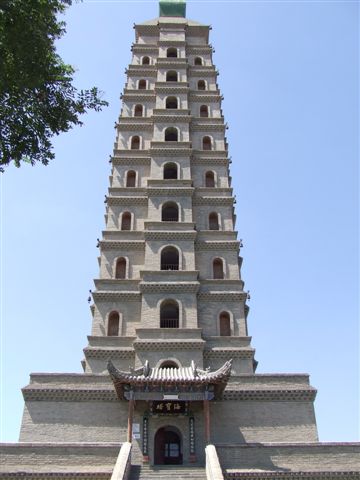
1. Hai Bao Ta- The oldest pagoda in China. It was built
by Helian Bobo, the great Hun Emperor.
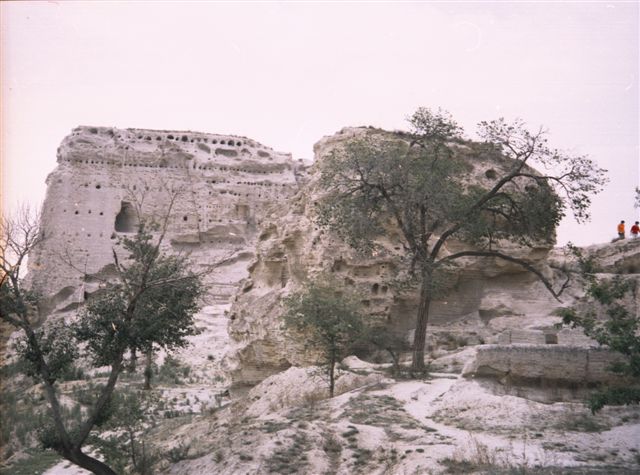
2. The Ruin of the palace in Tongwancheng
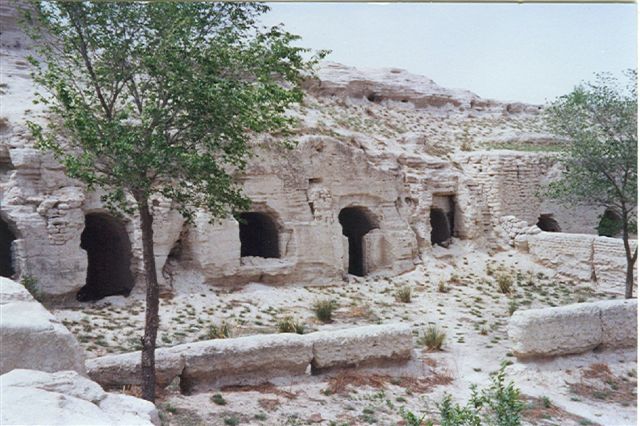
3. Houses of nobles and officers in the inner city
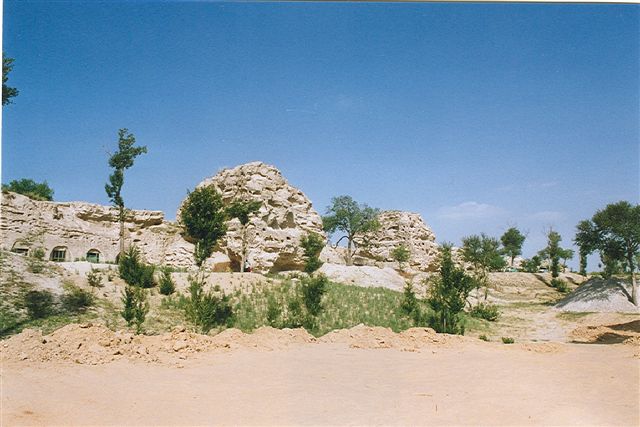
4. Towers in the outer part of Tongwancheng
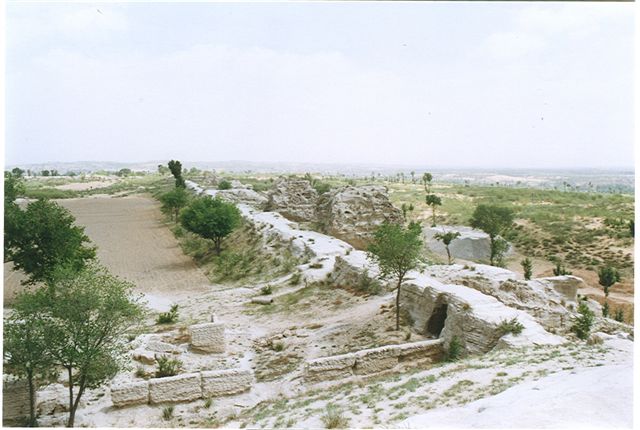
5. The outer defence system in the cty
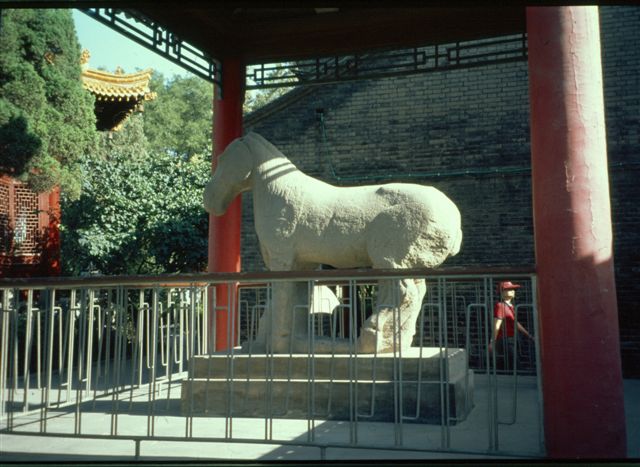
6. Horse sculpture was found in the Hun city
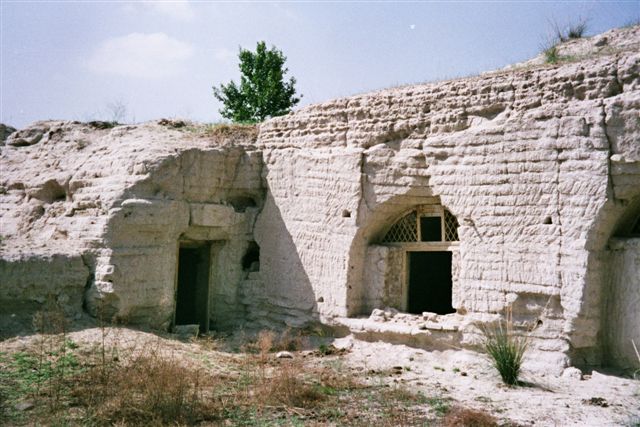
7. Ordinary houses in the city.
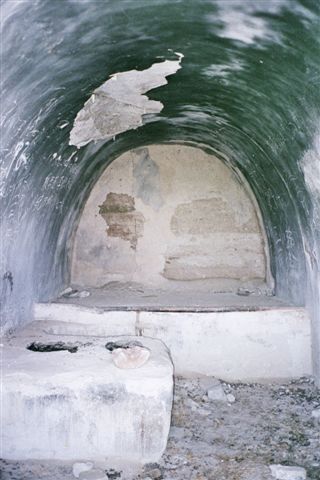
8. Inner part of the ordinary house. The central site
was the fireplace.
Anonymus: 1986. Gesta Hungarorum. In: Györffy, György (ed.) A magyarok elõdeirõl és a honfoglalásról. Gondolat, Budapest.
Barfield, T. J: 1981. The Hsiung-nu imperial confederacy: organisation and foreign policy. In: JAS 41. 41-61.
Batsajhan, Z.: 2002. Hunnu. Mongolian State University, Ulaanbaatar
Boldbaatar, J.- Lundeedzsancan, D: 1997. Mongol ulszin tör, erh dzüjl tüühen ulamdzslal. Ulaanbaatar.
Clauson, Sir Gerald: 1972. An Etymological Dictionary of Pre-Thirteenth Century Turkish. Claverdon Publishing, Oxford.
Cosmo, Nicola di: 2005. Ancient China and its enemies. Cambridge University Press. New Zealand.
Czuczor, Gergely- Fogarasi, János: 2004. A magyar nyelv szótára. CD kiadás, Arcanum kiadó, Budapest.
CSONGOR, Barnabás: 1993. Kínai források az ázsiai avarokról. In: Történelem és kultúra. 9. Orientalisztikai Munkaközösség, Budapest.
DAI, Damba, Altad: 2003. Hunnu bolod mongol. Inner Mongolian Scientific Publishing, Hohhot.
Deng, Hui: 2004. Tongwan city – the Monument of National cultural Exchange and the Testimony of Environmental Changes. 1-15. In: Tongwancheng yizhi zong he yan jiu. Sang Qin, Xian.
Ecsedy, Ildikó: 1987. A korai kínai állam kezdetei. Akadémiai Kiadó, Budapest.
Érdy, Miklós: 2001. A hun lovastemetkezések. Magyarországért, Édes Hazánkért, Budapest.
Fogarasi, János: 1862. A székely népköltészetrõl. In: Nyelvtudományi Közlemények.
Gernet, Jaques: 2001. A kínai civilizáció története. Budapest, Osiris Kiadó.
Gongor, D: 1970-78. Halh tovchoon. I-II. Ulaanbaatar. Mongolian Academy of Sciences.
Groom, Francis Hindes: 1899. Gypsy Folk-Tales. London, Hurst and Blackett.
Gyõrffy, György (ed): 1986. A magyarok elõdeirõl és a honfoglalásról. Szépirodalmi Kiadó, Budapest.
Haloun, G.: 1926. Seit wann kannten die Chinesen die Tokharer oder die Indogermanen überhaupt? Leipzig.
Hou, Yonjiang (ed): 2004. Tongwancheng yizhi zong he yan jiu. (Tongvancseng romváros tanulmányozása, vizsgáata) SangQin, Xian
Hou, Yong-jian-Cao Zhi-hong: 2008. Investigation and Research on the Important Capital site of Tongwancheng in Eurasian Grassland Zone. In: A Fordulat. The Hungarians and the Orient II. Conference on Ancestral History. Section of Archaeology and Written sources. Hungarian world Association, Budapest, 163-172.
Hu, Ji: 2004. The Tongwan City as One of the Garrison Posts on the Silk road During the Sixteen-states Period – the Commentary on the Study along the Soutern Fringle of Ordos. In: Tongwancheng yizhi zong he yan jiu. SangQin, Xian, 107-111.
Hucker, Charles O. (ed.): 1985. A Dictionary of official titles in Imperial China. Stanford University Press, Stanford.
Hulsewe, A. F. P.: 1979. China in Central Asia. The Early stage: 125 BC - A.D 23.Leiden, E. J. Brill.
Kang, Lanyin: 2004. The research and investigation of Tongwan city. In: Tongwancheng yizhi zong he yan jiu. SangQin, Xian, 16-21.
Ligeti, Lajos: 1950. Mots de civilisation de Haute Asie eu transcription chinoise. In: Acta Orientaliae Hungaiae. 1.1. 140-88.
Ligeti, Lajos, (ford.) : 1962. Secret History of Mongols in Hungarian. Gondolat, Budapest.
Loevwe, Michael - Twitchett, Denis (eds.): 1986. The Cambridge History of China. Chin and Han Empires. Vol. I. Cambridge University Press, London, New York, Melbourne.
Ma, Li Qin: 2005. Yuan xiong-nu, xiong-nu. Inner Mongolian University Press, Hohhot.
MASPERO, Henri: 1978. Az ókori Kína. (The ancient China) Gondolat, Budapest.
Mote, F. W: 1999. Imperial China 900-1800. Harvard University Press. Cambridge, Massachusetts, London.
Németh, Gyula (ed.): 1986. Attila és hunjai. Budapest, Akadémiai Kiadó.
Németh, Gyula: 1991. A honfoglaló magyarság kialakulása. Akadémia Kiadó, Budapest.
Ortutay-Kriza (ed): 1976. A magyar népballadák. Szépirodalmi Könyvkiadó, Budapest.
Polonyi, Péter: 1986. Kína. Panoráma útikönyvek sorozat. Budapest
Potanin, G.N.: 1893. Tangutsko-tibetskaja okraina Kitaja i Central’naja Mongolija. Vol.I. Saintpeterburg.
Pritsak, Omeljan: 1954. Kultur und Schrache der Hunnen. In: Festschrift Dmytro Chyzhewskiy zum 60. Geburstag. Berlin, Harrasowitz, 239-249.
Prusek: 1971. Chinese statelets and the Northern Barbarian in the Period 1400-300 BC. Dordrecht, D. Reidel Publishing Co.
Purev, Otgoni: 2002. Mongolin böögiyn sasin. Admon, Ulaannbaatar.
Sinkovics, Balázs: 2001. Fehérvár helyneveink. In: Sinkovics, Balázs-Felföldi Szabolcs, szerk.: Nomád népvándorlások-magyar honfoglalás. Magyar Õstörténeti Könyvtár 15. Balassi Kiadó, Budapest, 130–138.
Szegõ, Iván: 2004. Világörökség lesz a hunok fõvárosa? - National Geographic hírlevél. (www.geographic.hu) Elektronikus kiadás. április 8. 1-3.
Sukhbaatar, G.: 1992. Mongolin tuuhiyn deej bichig. I-r boti. Ulaanbaatar, Mongolian Academy of Sciences
G. Sukhbaatar: 1980. Mongolchuudin ertniy öbög. Ulaanbaatar.
Tolstov, Sz. P.: 1947. Az õsi Chorezm. Szikra, Budapest.
Twitchett, Denis (ed.): 1979. The Cambridge History of China. Sui and Tang China.Vol. III. Cambridge University Press, London, New York, Melbourne.
Uchiraltu: 1996. 4. Hunnu-yin keseg üge-yin soyol sergugelde. 4. In: Journal of Inner Mongolian University Philosophy & Social Sciences in Mongolian. Hohhot, China. 101-119.
Yamada, Nobuo: 1989. The formation of the Hsiung-nu nomadic state. The case of Hsiung-nu. In: Historical studies of nomadic peoples in North-Asia. Tokyo University Press, Tokyo. 295-304.
Vargyas, Lajos: 1959. Kõmûves Kelemenné eredete. Néprajzi Értesítõ, 5-73.
Vargyas, Lajos (ed): 1988. Magyar Néprajz. V. Népköltészet. Magyar Tudományos Akadémia. Budapest.
Vásáry, István: 1993. A régi Belsõ-Ázsia története. Szeged.
Vladimircov, B. J: 1934. Obsesztvennij sztoj mongolov. Leningrad.
Wang, Gang: 2004. The textual research of the Map that restored and distribution of the Ancient Tongwan city. In: Tongwancheng yizhi zong he yan jiu. SangQin, Xian, 199-204.
Wang, Zhizhen: 2004. The investigation of the Tablet Site of The Inscription for Tongwan city. In: Tongwancheng yizhi zong he yan jiu. Sang Qin, Xian, 111-113..
Watson, B.: 1961. Records of the Grand historian of China. Translated from the Shih-chi of Ssu-ma-Chien. New Xork- London, .I-II.
Wen, Cuifang: 2003. The historical Chronicle of the Great Xia Kingdom. In: Tongwancheng yizhi zong he yan jiu. Sang Qin, Xian, 294-310.
Zhou, Weizhou: 2004. The Textual research on the New-built Castles During Sixteen – state Period. In: Tongwancheng yizhi zong he yan jiu. SangQin, Xian. 93-98.
2004. The Textual Research on the Crossed Bronze Brand of Yuan Dynasty –Unearthened in Tongwan city. In: Tongwancheng yizhi zong he yan jiu. SangQin, Xian, 51-55.
1 Hou-Cao, 2008. 163.
2 Ma, 2005. 343.
3 The Chinese chronicles recorded an expression "yu tu" for the centre of the Hun king, and according to Uchiraltu, Inner-Mongolian linguist, that reconstruction is "ordu" or palace. Uchiraltu, 1996. 4. 103.
4 The name of the pagoda today is Hai Ba ta, which refers to Helian Bobo. This site is situated on the northern part of the city.
5 Hou-Cao, 2008. 164.
6 Kang, 2004. 16.
7 Ma, 2005. 348.
8 Deng, 2004. 10. Hereby the author refers to the Shui Jing commentary.
9 Jin shu recorded the building process.
10 Zhou, 2004. 51-54.
11 Wang, 2004. 111-112.
12 Jin shu 116.
13 Hou, 2008. 164.
14 Perlee, 1961.
15 Han shu. History of Huns. L. Uchiraltu, 1996. 4. 113-114.
16 Csornai, 2007. 307. Hans hu 8.
17 Potanin, 1875. 107.
18 Andor Zombori’s information from Chinese scholars.
19 The Heaven-cult is name as Tengri-cult for Inner Asian people. Also, the Hungarians and Mongolian had white horse sacrifice in the past.
20 Purev, 2002. 46.
21 That mountain is Pilis, which is near the Hungary’s present-day capital, Budapest.
22 Gesta Hungarorum, 46. In: Gyõrffy, 1986. 171.
23 Kézai, 27. In: Gyõrffy, 1986. 189.
24 According to the Czuczor-Fogarasi linguistic dictionary, the Hungarian word “fejér" shows, that is a sacral name, connecting with the Heaven. (fe- up in Hungarian). But they say, that the Hungarian fejér, or white can be compared with the Chinese bei, or white.
25 Nowadays is in Transylvania, Romania.
26 Nowadays is in Serbia, near Belgrad. The Belgrad also means White city.
27 Nowadays is in Ukraine.
28 Nowadays is in Croatia. The first Hungarian-Croatian king, Kalman was enthroned in 1096.
29 Chagan Khota was the Khublai khan’s capital. The meaning of the word: White city, where the khota can be Hun name for city. We can find kota, káta in Central-Asian and Hungarian place names.
30 That was the centre for Tsogtu tayishi in nowadays Mongolia. (Built in the 17th century.)
31 Jin shu, 130.
32 Polonyi, 1986. 200.
33 It is a name of the builder’s wife.
34 Ortutay-Kriza, 1976. 11.
35 Vargyas, 1959. 5-73.
36 Vargyas, 1959. 5-73.
 © The Author(s) -- Los artículos son propiedad de sus autores. (Ley 11.723 de la Republica Argentina)
© The Author(s) -- Los artículos son propiedad de sus autores. (Ley 11.723 de la Republica Argentina)